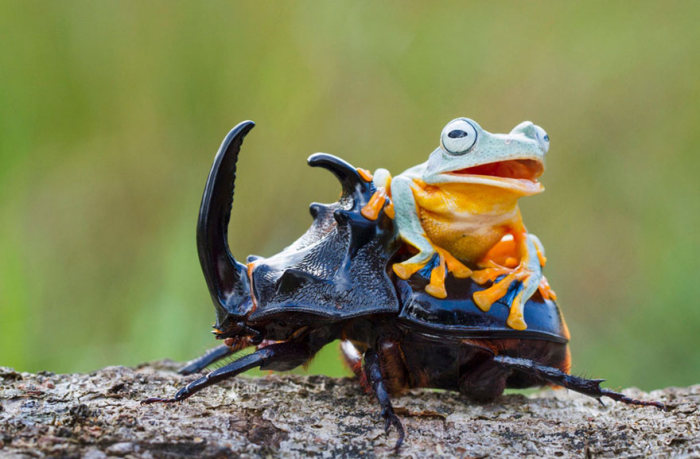|
|
Frog Riding A Beetle
|
Dung beetles play a remarkable role in agriculture. By burying and consuming dung, they improve nutrient recycling and soil structure. They also protect livestock, such as cattle, by removing dung, which, if left, could provide habitat for pests such as flies. Therefore, many countries have introduced the creatures for the benefit of animal husbandry. In developing countries, the beetle is especially important as an adjunct for improving standards of hygiene. The American Institute of Biological Sciences reports that dung beetles save the United States cattle industry an estimated US$380 million annually through burying above-ground livestock feces.
Some beetles help in a professional setting, doing things that people cannot; those of the family Dermestidae are often used in taxidermy and preparation of scientific specimens to clean bones of remaining soft tissue. The beetle larvae are used to clean skulls because they do a thorough job of cleaning, and do not leave the tool marks that taxidermists' tools do. Another benefit is, with no traces of meat remaining and no emulsified fats in the bones, the trophy will not develop the unpleasant dead odor. Using the beetle larvae means that all cartilage is removed along with the flesh, leaving the bones spotless.
• Beetle consumption
Insects are used as human food in 80% of the world's nations. Beetles are the most widely eaten insects. About 344 species are known to be used as food, usually eaten in the larval stage. The mealworm is the most commonly eaten beetle species. The larvae of the darkling beetle and the rhinoceros beetle are also commonly eaten.
|
|









